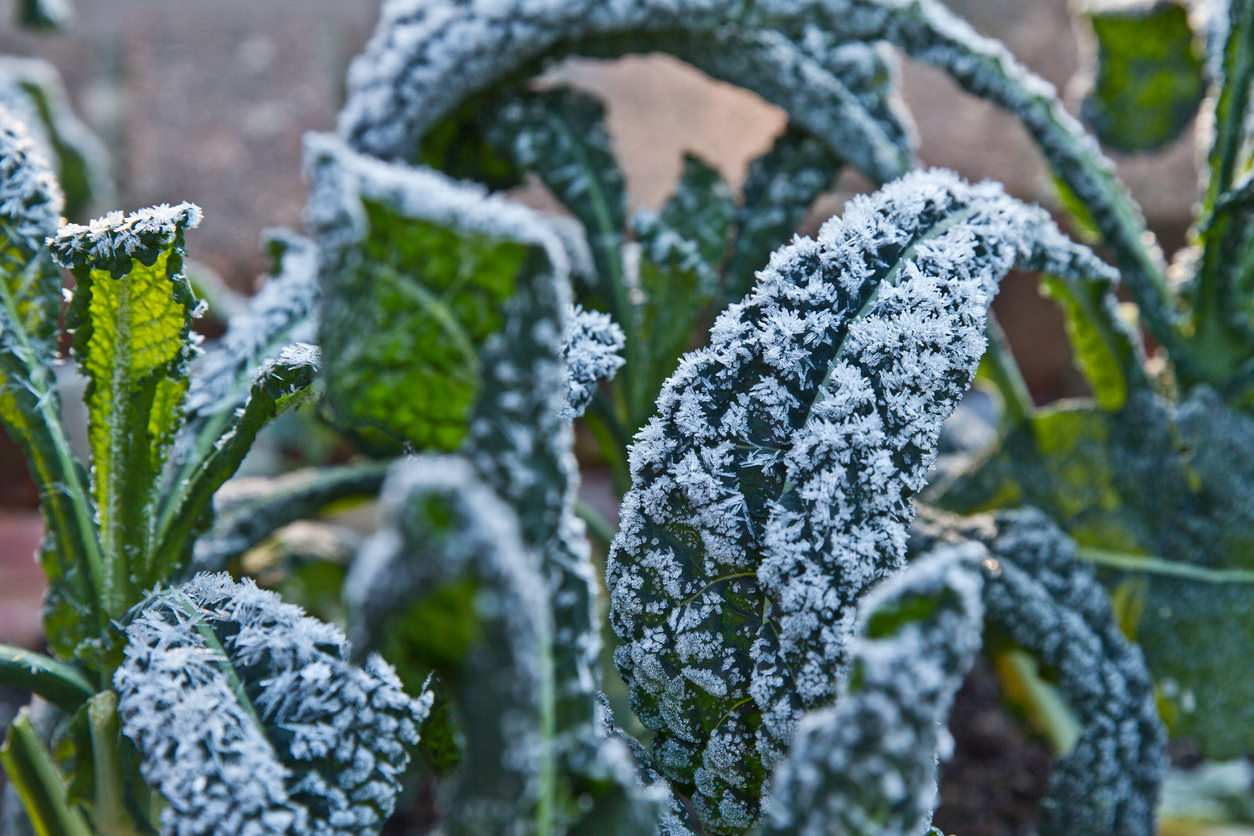I try my best to love all the seasons. They each have their unique joys: there’s nothing quite like the quiet of a snowstorm or the brilliant colors of the trees during fall in New England. But somewhere around the time when the thermometer starts dipping lower each day, I start thinking about how to garden in the winter.
Is it possible? What can I grow? Is it going to end in heartbreak? Yes, it is possible. And yes, it could end in heartbreak. But what if it ends in fresh vegetables on the stovetop?
Discover 10 top tips for growing, harvesting, and enjoying fruits, vegetables, herbs and more from your home garden—when you access the FREEBIE How to Grow a Vegetable Garden, right now!
How to garden in the winter – successfully
If you’re thinking about how to garden in the winter, the first thing you should probably do is adjust your expectations. Those of you in warm plant hardiness zones may be able to grow more varieties and larger numbers of crops than those of us living in, say, zones 4 or 5. Even so, it’s wise to consider that you could get a surprise freeze or a bit of snow.
For those of us in colder regions, I’m sorry to say it, but the selection is limited unless you have some fantastic greenhouse set up, but that’s for another conversation. So the first thing to do is adjust your expectations. Yes, I’d love to have Brandywine tomatoes on my table all year, but that’s just not realistic.
You do have options, though, because you can look at how to garden in the winter indoors or outdoors, and they both have different requirements. For example, if you want to keep an outdoor garden, it’s best to stick with crops that don’t mind cool weather.
Kale, for example, tastes better after a frost or two. Onions don’t mind the cold too much. If you start them early enough, Brussels sprouts can survive temperatures as low as 20 degrees Fahrenheit.
You can further expand your selection if you use a cold frame, which is like a mini-greenhouse. Spinach could grow into early winter, although it may also go dormant. That’s not a bad thing, though, since it will start growing when the days get longer, and you’ll have an early spring harvest. Don’t forget about garlic, either. In fact, because it takes so long to mature, you need to plant it in the fall or early winter and let it do its thing until spring.
Your other option is to move your gardening hopes and dreams indoors. Grow an indoor herb garden or try your hand at hydroponic gardening. Even with a hydroponic setup, it’s still smart to keep your aspirations realistic. They can be great for growing lettuces and greens but maybe wait until warm weather for your corn and eggplant. In either case, investing in a grow light will help you find more success, though many hydroponic systems come with these built-in.
Doing more with your winter garden
Beyond planting and harvesting, there’s another way to think about how to garden in the winter, and that’s around planning and prep work. Winter is the perfect time to consider your garden layout for next season.
Figure out which vegetables, fruits, and herbs you want to grow. Work on your compost bin. Clean your tools and your garden shed. Order seeds or sort the seeds you’ve saved.
And when the time comes, when that last frost date is in sight, start your seeds. Spring will be here before you know it.
What do you do with your garden during the winter months?
Discover 10 top tips for growing, harvesting, and enjoying fruits, vegetables, herbs and more from your home garden—when you access the FREEBIE How to Grow a Vegetable Garden, right now!

One reply on “How to Garden in the Winter”
By this time of the year, I no longer need to bend over to pick kale. I let it grow until I’m picking leaves smaller than my palm. I leave them be and wait to see which ones will start to grow in the spring. This year I had two plants give nice sweet growth in March. Two others got pulled.
As other crops faded in late summer, I planted beets, carrots, parsnips, and salad turnips. My mid-Sept first planting has already given table servings from thinning. The carrots are starting to go into soup. Beets are ready to eat. The second planting will begin to go into the Holliday menus. By late November, I’ll be protecting the carrots, beets, and parsnips with bags of leaves between the rows. Later, I’ll bridge the rows with more bags. They winter well regardless of the weather and I can go out any time through February to lift the bags, pull some roots and enjoy fresh all winter. In another month, the leaves will be turned under or composted.